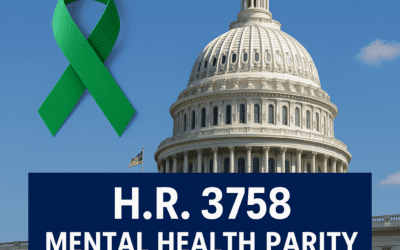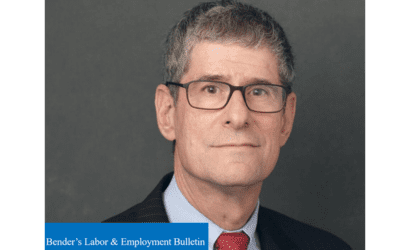If an individual suffers from a medical condition that limits her to part-time work, would she still qualify for disability benefits?
That was the question answered in McClain v. Eaton Corp., 2014 U.S.App.LEXIS 1354 (6th Cir. Jan. 24, 2014). There, the employer’s disability plan provided that the claimant was entitled to disability benefits if she was “totally and continuously unable to engage in any occupation or perform any work for compensation or profit.”
Since Karen McClain’s physician deemed her limited to part-time employment, the plan administrator found she no longer met the plan’s disability definition, thus benefits were terminated.
Applying a deferential standard of review, the 6th U.S. Court of Appeals upheld Eaton’s determination.
The court overruled the plaintiff’s argument that the plan administrator’s interpretation would deprive her of benefits even though her potential earnings would place her below the poverty line.
The plaintiff relied heavily on a prior 6th Circuit ruling, Vander-Klok v. Provident Life and Accident Ins. Co., 956 F.2d 610, 614-15 (6th Cir. 1992), which found that a disability definition comparable to Eaton’s was met if the claimant was unable to pursue “gainful employment.”
A later ruling, Tracy v. Pharmacia & Upjohn Absence Payment Plan, 195 F. App’x 511, 519 (6th Cir. 2006), clarified further that “gainful employment is that employment from which a claimant may earn a reasonably substantial income rising to the dignity of an income or livelihood, even though the income is not as much as he earned before the disability.”
Nevertheless, the 6th Circuit determined that the wages McClain was deemed capable of earning were more than a “mere pittance” and “that an ability to do some work means one is not unable to do ‘any work.'”
The court also cited several other rulings that concurred in finding that a disability claimant’s ability to work on a part-time basis would be ineligible to receive benefits under an “any occupation” standard of disability comparable to the definition in the Eaton plan.
This is a difficult ruling to understand, especially if it is contrasted with Demirovic v. Bldg. Serv. 32 B-J Pension Fund, 467 F.3d 208 (2d Cir. 2006), and the cases cited in that opinion. Demirovic rejected a self-funded benefit plan’s denial of benefits to a claimant who was physically capable of working but vocationally unqualified to perform sedentary work.
The 2nd U.S. Circuit Court of Appeals relied on many of the same cases cited in the McClain opinion but reached a dramatically different conclusion.
For example, Demirovic relied on Helms v. Monsanto Co. Inc., 728 F.2d 1416, 1421 (11th Cir. 1984), which involved a plan similar to the Eaton plan, and where the court remarked that the plan has to be read in light of the congressional intent underlying the Employee Retirement Income Security Act, “that those who participate in the plans actually receive the benefits they are entitled to and do not lose these as a result of unduly restrictive provisions or lack of sufficient funds.” Id. (citing H.R. Rep. No. 93-807 (1974), reprinted in 1974 U.S.C.C.A.N. 4670, 4676-77).
Demirovic also looked at Torix v. Ball Corp., 862 F.2d 1428 (10th Cir. 1988), which similarly found: “We believe that the policy concerns which underlie ERISA would be severely undermined if we endorsed a literal reading of the plan’s terms.”
Hence, the 2nd Circuit determined: “The phrase ‘any gainful employment’ in the context of Demirovic’s insurance plan may not reasonably be read as denying benefits to a person who is physically capable of any employment whatsoever, so long as it earns a nominal profit.
“Nor may it be read as allowing an administrator to disregard a claimant’s individual vocational circumstances. To do so would ‘render[] the plan’s promise of a disability pension hollow for all but the most grievously incapacitated claimants,’ Brown v. Bd. of Trs. of the Bldg. Serv. 32B-J Pension Fund, 392 F. Supp. 2d 434, 444 (E.D.N.Y. 2005), would deprive plan participants of their reasonable expectations and is arbitrary and capricious.” 467 F.3d at 215.
Like the 10th and 11th circuits, the 2nd Circuit determined that interpreting provisions such as the ones found in the Eaton plan to require that the claimant have both a medical and vocational capability of earning a livelihood reflects the “most important purpose” of ERISA, which is “to assure American workers that they may look forward with anticipation to a retirement with financial security and dignity, and without fear that this period of life will be lacking in the necessities to sustain them as human beings within our society.” S. REP. NO. 93-127 (1973), reprinted in 1974 U.S.C.C.A.N. 4838, 4849. Id.
Under the facts presented, this ruling sets a dangerous course since its conclusion may embolden other plans to amend its provisions to seek the same protections.
Assuming that the plaintiff’s vocational assessment finding that McClain’s part-time work capability would not permit her to earn a livelihood above the poverty line is correct, the 6th Circuit rendered the protection afforded by the Eaton plan illusory.
While the court may have been compelled by the terms of the plan to give deference to Eaton’s determination, in Metro.Life Ins.Co. v. Glenn, 554 U.S. 105 (2008), the Supreme Court’s most recent ruling on the scope of review of ERISA benefit determinations cited Universal Camera Corp. v. NLRB, 340 U.S. 474, 490, 71 S. Ct. 456, 95 L. Ed. 456 (1951), which remarked:
“Reviewing courts must be influenced by a feeling that they are not to abdicate the conventional judicial function … The board’s findings are entitled to respect, but they must nonetheless be set aside when the record before a court of appeals clearly precludes the board’s decision from being justified by a fair estimate of the worth of the testimony of witnesses or its informed judgment on matters within its special competence or both.”
While ERISA is not governed by the same administrative law principles, the analogy is clear that there must still be a logical bridge built between the facts presented and the conclusions reached.






